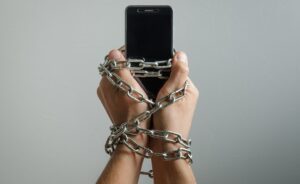Public safety reliance on public cellular and wireless networks, without significant network infrastructure improvements, means that when disaster strikes, communications fails for everyone.
If a large-scale terrorist attack took place tomorrow, would our communications infrastructure respond better, worse, or the same as on September 11? The answer might surprise you.
Despite the tremendous technological advances designed to improve public safety, our reliance on mobile devices and cellular networks has, in fact, left us more vulnerable than ever before.
This assertion might seem sensational to some. Since 9/11 we’ve witnessed a dramatic shift from analog to IP-based wireless broadband communication technologies and advanced communication protocols that support voice, video, and high-speed data in real-time. This paradigm shift has opened doors to new levels of security, surveillance, and disaster response coordination that we never dreamed possible.
An underlying problem, however, is that most of these technologies — everything from cloud-managed wireless LAN systems to application management software and established public safety networks — rely on the commercially available cellular wireless spectrum for connectivity.
In light of this, it’s worth examining some of the potential issues this creates should another incident occur.
Network availability
Typically, police officers and emergency responders rely on two-way radio systems to communicate and coordinate joint response efforts following major disasters. While inherent interoperability challenges have been an issue for years, it was not until significant events such as 9/11, Hurricane Katrina, and Hurricane Sandy that problems in infrastructure became magnified.
As a result, many law enforcement professionals increasingly rely on their own mobile devices and services, be it smartphones, tablets, or even Skype, in order to circumvent communication roadblocks during mission-critical operations.
Additionally, law enforcement has adoption SaaS video solutions — deployed over commercially available mobile networks such as Verizon and AT&T — for use in many security and public safety surveillance systems.
However, the first line of defense whenever there is a terrorist attack is to shut down cellular wireless network access to prevent possible remote detonation of bombs. That renders these systems running on public networks useless.
Increased traffic
Even if wireless service is not cut off, the influx of network traffic from the general public has always been an issue following major disasters. Recent reports also show that more than half of American homes don’t use or have landline services. This, combined with the added strain of thousands of users placing calls and uploading videos and posts simultaneously, can create a logjam on network availability right when it’s needed the most by first responders.
Events like the Boston Marathon bombing are sobering reminders of the potential fallout. According to Pew Charitable Trusts, the manhunt for the bombing suspects was adversely affected due to the city’s reliance on commercial wireless networks. The response required joint coordination among law enforcement agencies across multiple states and all levels of government, and limited network availability delayed the delivery of big data packets such as video and real-time live feeds from the field.
Segmented public safety
Today’s public safety communication systems are located in seven different radio spectrums using different technologies (such as, WiMax and LTE). This segmentation can prevent these agencies from being able to communicate with each other during routine incidents, and especially during major disasters when instant communications can save both lives and property.
Inability to communicate was a critical issue on 9/11 for responders at the World Trade Center, the Pentagon and Somerset, Penn. crash sites. And despite a tremendous investment to improve our communication infrastructure, interoperability issues persist.
The US National Telecommunications & Information Administration is developing a nationwide public safety radio spectrum called First Net. This initiative is still in its infancy, however, and is hampered by funding and hardware availability issues.
The bottom line is that because commercial wireless technologies are cheap and readily available, many emergency response agencies have become overly dependent on their availability to communicate in large-scale disasters. On top of this, many of the proposed solutions passed by Congress are not yet viable. So where does that leave us?
Encore post from Network Computing.

